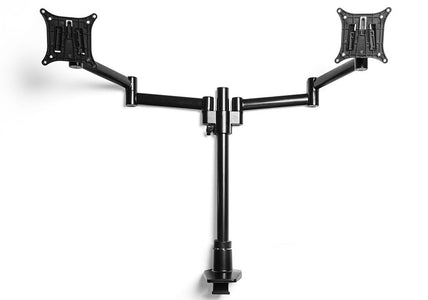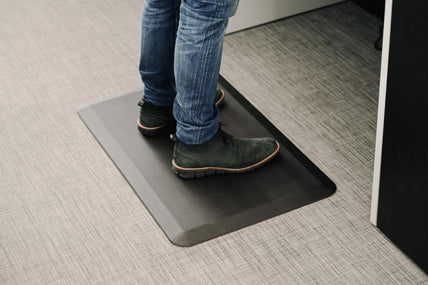How your employer can benefit massively from having a healthy office
By Daniel Angelini on June 16, 2019Blog updated February 2021
There’s been a shift in our attitude to workplace well-being. The wellness-at-work movement speaks of our society’s increasing need for balance in a hyper-connected world. Now more than ever, we need to ensure our employees are finding time for rejuvenation and aim to improve working conditions to maximise employee health.
The onset of Covid-19 has added a further layer to this in that many of us who work at a desk are now required to work remotely from home. No longer do we have the morning commute into work, we essentially have the option to roll out of bed and get started! Work hours have in fact become longer, as we trade the commute time for work time. And with many cities experiencing lockdown there is limited time outdoors resulting in less movement throughout the day.
Investing in health means employers minimise the risk of excessive employee stress and burnout, which have been proven to increase sick-leave taken, lower rates of productivity, and soaring rates of job-dissatisfaction.
This isn’t to say that employers should expect their workers to provide a less intensive output of work, but it’s the way we manage workloads with well-being strategies that will ensure our workforce is engaged and productive, and ultimately, more valuable assets. Because, let’s face it - it’s not enough to outlay resources for our employees without assessing the quantifiable, financial benefits of doing so.
It’s no wonder that some of the most innovative companies in the world were among the earliest adopters of workplace wellbeing programs. From Google, allowing dogs in the office, to in-house massages and yoga at Swisse, the leaders in the field are strides ahead of the pack. But what happens if your business does not have a Zuckerberg budget?

Taking small steps towards improving the health of your employees is the best way to start. In fact, in Australia, a study showed that unhealthy employees output 49 effective hours worked per month, whereas healthier employees output 143 effective hours worked per month. That’s up to 1,128 hours of extra productivity per employee per year! So what is it that is negatively impacting our employees health the most on a daily basis? The answer lies at the desk itself.
Prolonged sitting is the most concerning and detrimental habit of office workers, and leads to incredibly negative outcomes that can include back pain, lethargy, and overall decline in health. In May 2016, research from the Texas A&M Health Science Center School of Public Health (1) indicated that standing desks could increase employee productivity by up to 53% Not only this, the results showed employees using a standing desk experienced positive physical and emotional benefits, a decrease in body discomfort, were more engaged, and had greater overall job satisfaction.
The days of huddling over your screen in a poorly designed chair feeling tired before the clock even hits midday are on the way out. But if that scenario still sounds familiar, well, it’s time to initiate a change. Not only do those conditions lead to unhealthy employees, they create an environment where employee retention becomes more and more difficult. And in a world where young employees consistently jump from job to job, the difference between your business and the next could lie in your employee’s loyalty. There’s no more time to be complacent - the opportunity to maximise employee happiness and health has never been greater. And it starts with taking a stand for your employee’s health.
1) Garretta G, Bendena M, Mehtaa R, et al, 2016, ‘Call Center Productivity Over 6 Months Following a Standing Desk Intervention’, IIE Transactions on Occupational Ergonomics and Human Factors <http://www.tandfonline.com/doi/abs/10.1080/21577323.2016.1183534>










